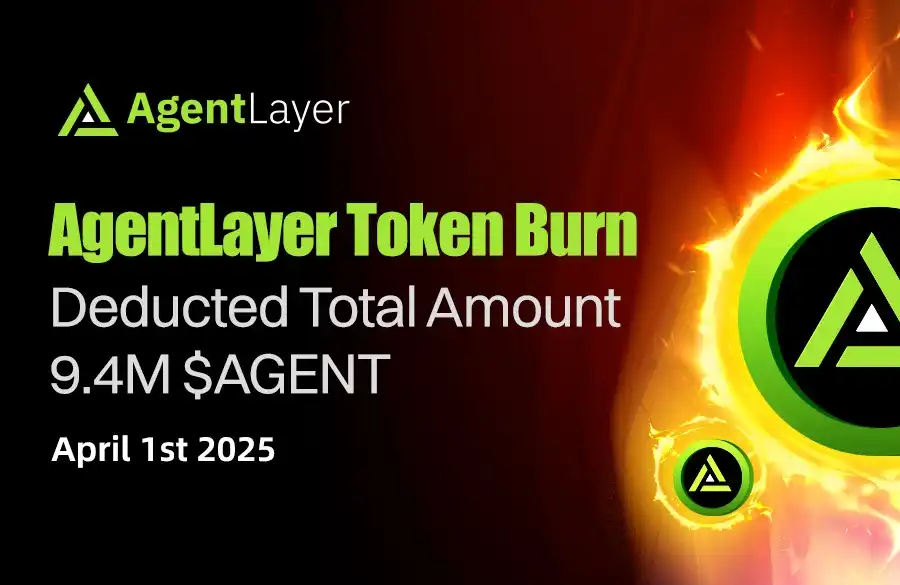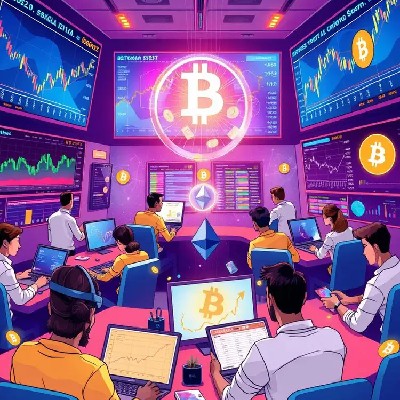Bitget: Ranked top 4 in global daily trading volume!
BTC market share61.49%
New listings on Bitget: Pi Network
BTC/USDT$85089.27 (+2.14%)Fear and Greed Index34(Fear)
Altcoin season index:0(Bitcoin season)
Coins listed in Pre-MarketPAWS,WCTTotal spot Bitcoin ETF netflow -$60.6M (1D); +$218.9M (7D).Welcome gift package for new users worth 6200 USDT.Claim now
Trade anytime, anywhere with the Bitget app. Download now
Bitget: Ranked top 4 in global daily trading volume!
BTC market share61.49%
New listings on Bitget: Pi Network
BTC/USDT$85089.27 (+2.14%)Fear and Greed Index34(Fear)
Altcoin season index:0(Bitcoin season)
Coins listed in Pre-MarketPAWS,WCTTotal spot Bitcoin ETF netflow -$60.6M (1D); +$218.9M (7D).Welcome gift package for new users worth 6200 USDT.Claim now
Trade anytime, anywhere with the Bitget app. Download now
Bitget: Ranked top 4 in global daily trading volume!
BTC market share61.49%
New listings on Bitget: Pi Network
BTC/USDT$85089.27 (+2.14%)Fear and Greed Index34(Fear)
Altcoin season index:0(Bitcoin season)
Coins listed in Pre-MarketPAWS,WCTTotal spot Bitcoin ETF netflow -$60.6M (1D); +$218.9M (7D).Welcome gift package for new users worth 6200 USDT.Claim now
Trade anytime, anywhere with the Bitget app. Download now

Coin-related
Price calculator
Price history
Price prediction
Technical analysis
Coin buying guide
Crypto category
Profit calculator

AI PIN priceAI
Not listed
Quote currency:
USD
Data is sourced from third-party providers. This page and the information provided do not endorse any specific cryptocurrency. Want to trade listed coins? Click here
$0.002182-14.10%1D
Price chart
Last updated as of 2025-04-01 17:28:47(UTC+0)
Market cap:--
Fully diluted market cap:--
Volume (24h):--
24h volume / market cap:0.00%
24h high:$0.002706
24h low:$0.002298
All-time high:$0.2432
All-time low:$0.001479
Circulating supply:-- AI
Total supply:
100,000,000AI
Circulation rate:0.00%
Max supply:
100,000,000AI
Price in BTC:75.02 BTC
Price in ETH:0.{5}1138 ETH
Price at BTC market cap:
--
Price at ETH market cap:
--
Contracts:
0xbc54...b97e99e(Ethereum)
More
How do you feel about AI PIN today?
Note: This information is for reference only.
Price of AI PIN today
The live price of AI PIN is $0.002182 per (AI / USD) today with a current market cap of $0.00 USD. The 24-hour trading volume is $0.00 USD. AI to USD price is updated in real time. AI PIN is -14.10% in the last 24 hours. It has a circulating supply of 0 .
What is the highest price of AI?
AI has an all-time high (ATH) of $0.2432, recorded on 2024-02-26.
What is the lowest price of AI?
AI has an all-time low (ATL) of $0.001479, recorded on 2023-12-22.
AI PIN price prediction
What will the price of AI be in 2026?
Based on AI's historical price performance prediction model, the price of AI is projected to reach $0.003099 in 2026.
What will the price of AI be in 2031?
In 2031, the AI price is expected to change by +41.00%. By the end of 2031, the AI price is projected to reach $0.006141, with a cumulative ROI of +181.46%.
AI PIN price history (USD)
The price of AI PIN is -97.35% over the last year. The highest price of in USD in the last year was $0.2397 and the lowest price of in USD in the last year was $0.002298.
TimePrice change (%) Lowest price
Lowest price Highest price
Highest price 
 Lowest price
Lowest price Highest price
Highest price 
24h-14.10%$0.002298$0.002706
7d-30.14%$0.002298$0.003743
30d-46.49%$0.002298$0.004132
90d-79.66%$0.002298$0.01231
1y-97.35%$0.002298$0.2397
All-time+35.19%$0.001479(2023-12-22, 1 years ago )$0.2432(2024-02-26, 1 years ago )
AI PIN market information
AI PIN holdings by concentration
Whales
Investors
Retail
AI PIN addresses by time held
Holders
Cruisers
Traders
Live coinInfo.name (12) price chart

AI PIN ratings
Average ratings from the community
4.6
This content is for informational purposes only.
AI to local currency
1 AI to MXN$0.041 AI to GTQQ0.021 AI to CLP$2.051 AI to UGXSh7.981 AI to HNLL0.061 AI to ZARR0.041 AI to TNDد.ت0.011 AI to IQDع.د2.861 AI to TWDNT$0.071 AI to RSDдин.0.241 AI to DOP$0.141 AI to MYRRM0.011 AI to GEL₾0.011 AI to UYU$0.091 AI to MADد.م.0.021 AI to AZN₼01 AI to OMRر.ع.01 AI to KESSh0.281 AI to SEKkr0.021 AI to UAH₴0.09
- 1
- 2
- 3
- 4
- 5
Last updated as of 2025-04-01 17:28:47(UTC+0)
AI PIN news

AI Agents Could Be Crypto’s Next Breakthrough – If We Shift From Hype to Utility
Bitcoin.com•2025-04-01 14:33

Enterprise Blockchain Network Launched on Hedera
Coinspaidmedia•2025-04-01 14:00

OpenAI plans open-weight language model launch after six years
Grafa•2025-04-01 09:50

AgentLayer Announces New Token Burn: 9.4 Million $AGENT Tokens Permanently Removed from Circulation
1. AgentLayer宣布已累计永久移除9,393,514枚$AGENT代币,占总供应量的0.9%,通过销毁和安全冻结机制。 2. 其中,2,393,514枚$AGENT代币通过月度收入回购销毁计划被销毁,符合通缩代币经济模型设计。 3. 7,000,000枚$AGENT代币因关联Phemex交易所安全事件的异常地址,被永久锁定至黑洞地址。 4. 所有操作均通过区块链记录,确保透明度和符合安全标准及社区治理原则。 5. AgentLayer将继续推进AI驱动的去中心化应用,包括PumpAgent、AgentStudio开发框架,并计划与PumpAgent及Ladyluck联合推出空投活动。
BlockBeats•2025-04-01 08:52

Harry Hippo ($HIPO): The Viral Meme Coin Game Presale Taking Off
99bitcoins•2025-04-01 06:44
Buy more
FAQ
What is the current price of AI PIN?
The live price of AI PIN is $0 per (AI/USD) with a current market cap of $0 USD. AI PIN's value undergoes frequent fluctuations due to the continuous 24/7 activity in the crypto market. AI PIN's current price in real-time and its historical data is available on Bitget.
What is the 24 hour trading volume of AI PIN?
Over the last 24 hours, the trading volume of AI PIN is $0.00.
What is the all-time high of AI PIN?
The all-time high of AI PIN is $0.2432. This all-time high is highest price for AI PIN since it was launched.
Can I buy AI PIN on Bitget?
Yes, AI PIN is currently available on Bitget’s centralized exchange. For more detailed instructions, check out our helpful How to buy guide.
Can I get a steady income from investing in AI PIN?
Of course, Bitget provides a strategic trading platform, with intelligent trading bots to automate your trades and earn profits.
Where can I buy AI PIN with the lowest fee?
Bitget offers industry-leading trading fees and depth to ensure profitable investments for traders. You can trade on the Bitget exchange.
Where can I buy crypto?
Video section — quick verification, quick trading

How to complete identity verification on Bitget and protect yourself from fraud
1. Log in to your Bitget account.
2. If you're new to Bitget, watch our tutorial on how to create an account.
3. Hover over your profile icon, click on “Unverified”, and hit “Verify”.
4. Choose your issuing country or region and ID type, and follow the instructions.
5. Select “Mobile Verification” or “PC” based on your preference.
6. Enter your details, submit a copy of your ID, and take a selfie.
7. Submit your application, and voila, you've completed identity verification!
Cryptocurrency investments, including buying AI PIN online via Bitget, are subject to market risk. Bitget provides easy and convenient ways for you to buy AI PIN, and we try our best to fully inform our users about each cryptocurrency we offer on the exchange. However, we are not responsible for the results that may arise from your AI PIN purchase. This page and any information included are not an endorsement of any particular cryptocurrency. Any price and other information on this page is collected from the public internet and can not be consider as an offer from Bitget.
Bitget Insights

Crypto_inside
8h
Day trading ❌ Swing trading. 🧐😵💫
Day trading and swing trading are two popular trading strategies used in financial markets. While both strategies aim to profit from market fluctuations, they differ in their approach, time frame, and risk management.
Day Trading:
1. Intra-day trading: Day traders buy and sell securities within a single trading day.
2. Closing positions before market close: Day traders close all positions before the market closes to avoid overnight risks.
3. Frequent trading: Day traders make multiple trades throughout the day.
4. Technical analysis: Day traders rely heavily on technical analysis, using charts and indicators to identify trading opportunities.
5. Risk management: Day traders use stop-loss orders and position sizing to manage risk.
Swing Trading:
1. Short-term trading: Swing traders hold positions for a shorter period than investors, typically from a few days to a few weeks.
2. Holding positions overnight: Swing traders may hold positions overnight, exposing themselves to overnight risks.
3. Less frequent trading: Swing traders make fewer trades than day traders, as they hold positions for longer periods.
4. Combination of technical and fundamental analysis: Swing traders use a combination of technical and fundamental analysis to identify trading opportunities.
5. Risk management: Swing traders use stop-loss orders, position sizing, and risk-reward ratios to manage risk.
Key Differences:
1. Time frame: Day traders hold positions for minutes or hours, while swing traders hold positions for days or weeks.
2. Trading frequency: Day traders make multiple trades throughout the day, while swing traders make fewer trades.
3. Risk management: Day traders focus on managing risk through quick trade execution and tight stop-loss orders, while swing traders use a combination of risk management strategies.
4. Analysis: Day traders rely heavily on technical analysis, while swing traders use a combination of technical and fundamental analysis.
Choosing Between Day Trading and Swing Trading:
1. Trading style: Day trading suits traders who can dedicate several hours a day to monitoring markets and making trades. Swing trading suits traders who prefer to hold positions for longer periods.
2. Risk tolerance: Day trading involves higher risk due to the fast-paced nature of the markets. Swing trading involves lower risk, as positions are held for longer periods.
3. Market analysis: Day traders rely on technical analysis, while swing traders use a combination of technical and fundamental analysis.
4. Time commitment: Day trading requires a significant time commitment, while swing trading requires less time.
Thank you...🙂
$BTC $ETH $SOL $PI $AI $XRP $DOGE $SHIB $BONK $COQ $CATS $BGB $BNB $U2U $WUF $WHY $SUNDOG $PARTI $CEC $BLUR
SUNDOG+1.87%
BTC+3.07%

Crypto_inside
8h
What is 'Position trading'..🤔🤔??
Position trading is a long-term trading strategy that involves holding a position in a security for an extended period, typically weeks, months, or even years. This approach focuses on capturing significant price movements and trends, rather than trying to time the market or make quick profits.
Key Characteristics:
1. Long-term focus: Position traders hold positions for an extended period, riding out market fluctuations.
2. Trend following: Position traders aim to identify and follow long-term trends in the market.
3. Fundamental analysis: Position traders often rely on fundamental analysis, examining a company's financials, management, and industry trends.
4. Risk management: Position traders must manage risk carefully, as large price movements can result in significant losses.
Position Trading Strategies:
1. Trend identification: Position traders use technical indicators and chart patterns to identify long-term trends.
2. Breakout trading: Position traders buy or sell when a security breaks out of a established trading range.
3. Mean reversion: Position traders bet on prices reverting to their historical means.
Advantages:
1. Reduced transaction costs: Position traders incur lower transaction costs due to fewer trades.
2. Less emotional stress: Position traders are less affected by short-term market volatility.
3. *Potential for significant gains*: Position traders can capture significant price movements and trends.
Disadvantages:
1. Market risk: Position traders are exposed to market risk, as large price movements can result in significant losses.
2. Opportunity cost: Position traders may miss out on other investment opportunities while holding a long-term position.
3. Requires patience and discipline: Position traders must be patient and disciplined, as it can take time for a trade to develop.
Position Trading vs. Day Trading:
1. Trade duration: Position traders hold positions for weeks, months, or years, while day traders close their positions within a single trading day.
2. Trade frequency: Position traders make fewer trades, while day traders make multiple trades throughout the day.
3. Risk management: Position traders focus on managing risk through position sizing and stop-loss orders, while day traders focus on managing risk through quick trade execution and tight stop-loss orders.
Position trading requires a unique combination of fundamental analysis, technical analysis, and risk management. While it can be a profitable strategy, it's essential to carefully consider the risks and challenges involved.
Thank you...🙂
$BTC $ETH $SOL $PI $AI $XRP $BGB $BNB $DOGE $SHIB $BONK $FLOKI $U2U $WUF $ORDER $SUNDOG $TRX $WHY
SUNDOG+1.87%
BTC+3.07%

Crypto_inside
8h
What is Scalping...🤔🤔??
Scalping is a trading strategy that involves making multiple small trades in a short period, typically seconds or minutes, to take advantage of small price movements. The goal of scalping is to accumulate small profits from each trade, which can add up to significant gains over time.
Key Characteristics:
1. Short-term focus: Scalping involves holding trades for a very short period.
2. High-frequency trading: Scalpers make multiple trades in rapid succession.
3. Small profit targets: Scalpers aim to make small profits from each trade.
4. Risk management: Scalpers must manage risk carefully to avoid significant losses.
Scalping Strategies:
1. Trend following: Scalpers follow the trend, making trades in the direction of the market momentum.
2. Range trading: Scalpers buy and sell within a specific price range, taking advantage of oscillations.
3. Mean reversion: Scalpers bet on prices reverting to their historical means.
Tools and Techniques:
1. Technical analysis: Scalpers use technical indicators, such as moving averages and RSI, to identify trading opportunities.
2. Chart patterns: Scalpers recognize chart patterns, such as triangles and wedges, to anticipate price movements.
3. Order flow analysis: Scalpers analyze order flow to gauge market sentiment and identify potential trading opportunities.
Risks and Challenges:
1. Market volatility: Scalping involves trading in volatile markets, which can result in significant losses.
2. Commissions and fees: Scalpers incur high transaction costs due to frequent trading.
3. Emotional stress: Scalping can be emotionally demanding, requiring intense focus and quick decision-making.
Scalping vs. Day Trading:
1. Trade duration: Scalping involves holding trades for seconds or minutes, while day trading involves holding trades for hours or until the market closes.
2. Trade frequency: Scalpers make multiple trades in rapid succession, while day traders typically make fewer trades.
Scalping requires a unique combination of technical analysis, risk management, and mental discipline. While it can be a profitable strategy, it's essential to carefully consider the risks and challenges involved.
Thank you...🙂
$BTC $ETH $SOL $PI $AI $XRP $DOGE $SHIB $BONK $COQ $U2U $WUF $ADA $WHY $SUNDOG $PARTI $CATS
SUNDOG+1.87%
BTC+3.07%

Crypto_inside
10h
What is IQ..🤔🤔??
Intelligence Quotient (IQ) is a score derived from standardized tests designed to measure human intelligence. IQ tests assess various cognitive abilities, such as:
Components of IQ Tests:
1. Verbal Comprehension: Measures ability to understand and use language.
2. Perceptual Reasoning: Assesses ability to reason, form concepts, and solve problems.
3. Working Memory: Evaluates ability to hold and manipulate information in short-term memory.
4. Processing Speed: Measures ability to quickly and accurately process visual information.
IQ Score Interpretation:
1. Average IQ: 85-115 (68% of population)
2. Above Average IQ: 116-130 (16% of population)
3. Gifted IQ: 131-145 (2% of population)
4. Highly Gifted IQ: 146-160 (0.1% of population)
5. Profoundly Gifted IQ: 161-175 (0.01% of population)
Criticisms and Limitations of IQ Tests:
1. Cultural Bias: IQ tests may favor certain cultural or socioeconomic groups.
2. Narrow Scope: IQ tests only measure specific aspects of intelligence.
3. Context-Dependent: IQ scores can be influenced by environmental factors.
4. Oversimplification: IQ scores can oversimplify complex cognitive abilities.
Types of Intelligence:
1. Fluid Intelligence: Ability to reason, think abstractly, and solve problems.
2. Crystallized Intelligence: Ability to use learned knowledge and experience.
3. Emotional Intelligence: Ability to recognize and understand emotions.
Notable Theories and Models:
1. Gardner's Multiple Intelligences: Proposes multiple types of intelligence, such as linguistic, spatial, and bodily-kinesthetic.
2. Sternberg's Triarchic Theory: Suggests three components of intelligence: analytical, creative, and practical.
IQ tests provide a limited snapshot of cognitive abilities and should not be considered the sole measure of intelligence or potential.
Thank you...🙂
$BTC $ETH $SOL $PI $AI $XRP $BGB $BNB $ONDO $DOGE $SHIB $BONK $FLOKI $U2U $WUF $PARTI $WHY $SUNDOG
SUNDOG+1.87%
BTC+3.07%

Crypto_inside
11h
Machine learning ❌ Traditional learning. 🧐😵💫
Machine learning and traditional learning are two distinct approaches to learning and problem-solving.
Traditional Learning:
1. Rule-based: Traditional learning involves explicit programming and rule-based systems.
2. Human expertise: Traditional learning relies on human expertise and manual feature engineering.
3. Fixed models: Traditional learning uses fixed models that are not updated automatically.
Machine Learning:
1. Data-driven: Machine learning involves learning from data and improving over time.
2. Algorithmic: Machine learning relies on algorithms that can learn from data and make predictions.
3. Adaptive models: Machine learning uses adaptive models that can update automatically based on new data.
Key Differences:
1. Learning style: Traditional learning is rule-based, while machine learning is data-driven.
2. Scalability: Machine learning can handle large datasets and complex problems, while traditional learning is limited by human expertise.
3. Accuracy: Machine learning can achieve higher accuracy than traditional learning, especially in complex domains.
Advantages of Machine Learning:
1. Improved accuracy: Machine learning can achieve higher accuracy than traditional learning.
2. Increased efficiency: Machine learning can automate many tasks, freeing up human experts for more complex tasks.
3. Scalability: Machine learning can handle large datasets and complex problems.
Disadvantages of Machine Learning:
1. Data quality: Machine learning requires high-quality data to learn effectively.
2. Interpretability: Machine learning models can be difficult to interpret and understand.
3. Bias: Machine learning models can perpetuate biases present in the training data.
When to Use Machine Learning:
1. Complex problems: Machine learning is well-suited for complex problems that require pattern recognition and prediction.
2. Large datasets: Machine learning can handle large datasets and identify trends and patterns.
3. Automating tasks: Machine learning can automate many tasks, freeing up human experts for more complex tasks.
When to Use Traditional Learning:
1. Simple problems: Traditional learning is well-suited for simple problems that require explicit programming and rule-based systems.
2. Small datasets: Traditional learning is suitable for small datasets where machine learning may not be effective.
3. Human expertise: Traditional learning relies on human expertise and manual feature engineering, making it suitable for domains where human expertise is essential.
Thank you...🙂
$BTC $ETH $SOL $PI $AI $XAI $BGB $BNB $DOGE $DOGS $SHIB $BONK $MEME $XRP $ADA $U2U $WUF $PARTI $WHY
BTC+3.07%
BGB+2.08%
Related assets
Popular cryptocurrencies
A selection of the top 8 cryptocurrencies by market cap.
Recently added
The most recently added cryptocurrencies.
Comparable market cap
Among all Bitget assets, these 8 are the closest to AI PIN in market cap.


































